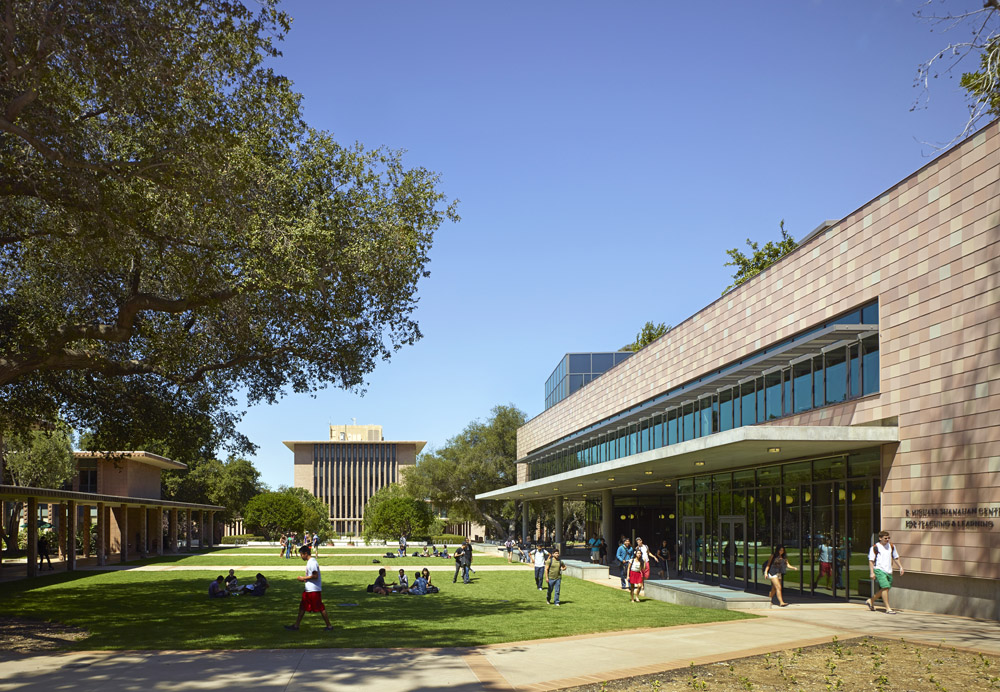Harvey Mudd Takes Novel Approach With New MOOCs
November 18, 2014
Creating a massive open online course (MOOC) is not what one might expect from a small, residential liberal arts college with a focus on close faculty-student relationships and small class sizes. But that expertise in hands-on education is just what Harvey Mudd College faculty and students used to design three new MOOCs aimed at strengthening computer science and physics education in the nation’s schools.
The MOOCs opened for registration on Nov. 18 and will begin Feb. 2, 2015. The courses will be offered free of charge via edX.org, the nonprofit online learning destination founded by MIT and Harvard.
Four teams of students collaborated with faculty members over the past year to develop two of the unique MOOCs. Middle Years Computer Science (MyCS) is an introduction to computer science course aimed at middle and high school teachers. How Stuff Moves is a physics course on mechanics for advanced high school/early college-level students. While the main course content came from professors, the student teams translated that content into the MOOCs—building the original online platform and leading video-taped demonstrations, group learning activities, hands-on lessons and problem set explanations, all based on the collaborative learning style practiced at Harvey Mudd.
While most MOOCs are designed for college students or graduates seeking professional development, Harvey Mudd’s online computer science course, MyCS, provides curricular resources to help teachers offer computer science courses not currently available at their schools or improve existing courses. The MyCS course content is based on Harvey Mudd’s highly successful intro to CS course and was adapted for middle and high school students with the help of a grant from the National Science Foundation. In the course videos, Harvey Mudd students actively demonstrate lesson plans filled with experiential learning activities and demonstrations geared for middle and high school students.
“The primary goal of the MyCS MOOC is to empower teachers,” said computer science Professor Mike Erlinger, who leads CS workshops for local teachers and co-developed the MyCS curriculum. “Computer science and physics were the first two MOOC subjects suggested, because they are not well represented at many high schools in the U.S., not even in the form of advanced-placement courses.”
MyCS emphasizes the fun and creative aspects of programming, according to Elly Schofield ’13, MOOC program coordinator at Harvey Mudd.
“At its heart, computer science is as much about creativity as it is about analytical problem-solving,” Schofield said. “We want our course to reflect that creativity, and to show students encountering CS for the first time that the field is not only useful, but also exciting, with a lot of opportunities to make one’s own unique mark on technology.”
The second MOOC, How Stuff Moves, is a physics course in mechanics designed to support high school or college students in their first course in calculus-based physics. Many U.S. high schools do not offer advanced physics courses such as mechanics. Professor Peter Saeta originally wanted to create an online version of his first-year Physics 24: Mechanics course in order to give students in his class who had less high school preparation in physics extra resources to help them master the material. Translating the course to a MOOC platform allows this resource to be shared broadly with both high school and college students seeking to increase their understanding of physics.
“There simply are not enough well-trained high school physics teachers in the U.S., so the level of student learning in physics is not as high as it could be when students enter college,” said Professor of Physics Peter Saeta. “My goal in creating this course was to make available to interested high school and college students a resource that would help them master an essential and incredibly fascinating area of physics—mechanics.”
The third course, Programming in Scratch, will be the first MOOC focused solely on teaching Scratch, a user-friendly programming language designed for students as young as elementary school. The course was developed by computer science Professor Colleen Lewis and aims to help teachers, students and their parents learn computer science concepts through fun and engaging videos and exercises.
“With these new online courses for teachers and students, we hope to address persistent gaps in science education among middle and high school students across the country,” said Harvey Mudd President Maria Klawe. “Harvey Mudd’s innovative STEM courses have been highly successful in engaging women and students from underrepresented groups. By making these resources widely available, we can give teachers across the country the additional support and resources they need to teach and students the resources they need to learn.”
Scott Lukesh, a teacher at the Fremont Academy in Pomona, California, started a computer science program last year after taking one of Harvey Mudd’s teacher workshops. Lukesh sees the MyCS MOOC as an opportunity to spread a much needed CS curriculum to middle school students.
“Education has a lot to learn about computer science at the K-12 level,” said Lukesh. “CS is something all students deserve an opportunity to know about, and we are doing a disservice if we are not educating everyone on the impact of CS and the opportunities.”
“There’s a mountain of societal beliefs about computer science,” Lukesh said. “We are fighting decades of a certain model and a certain look. The MyCS curriculum is really good at showing that CS is a very positive field. It can be used for social improvement.”
